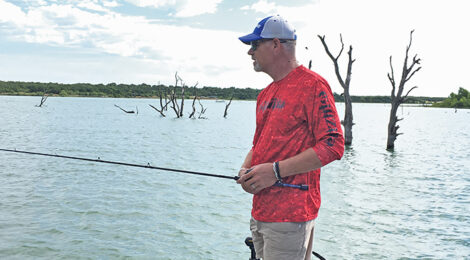
Shrinking A Lake Down To Size
There are several factors to consider when trying to eliminate unproductive water in any season and weather condition.
Story and photography by Brian Hughes
An often ask question by freshwater anglers is how to make a big lake fish smaller — in other words, shrinking it down to size. There are several factors to consider when eliminating unproductive water and all of them need to be processed when formulating a plan.
We should probably start with the season, as that will tell us our depth for the most part. In really there are only two considerations here, as fall and spring are almost the same, as are winter and summer.
What we are trying to determine is where the greatest concentration of fish will be found, shallow or deep. Spring and fall will find a goodly population in the shallows, either for the spawn (spring) or feeding up prior to winter (fall.) Winter and summer see a majority of fish holding in deeper water, deep being a relative term. By determining which seasonal pattern we should implement, a huge amount of area can be eliminated from consideration.
As an example, let me relate a tournament strategy I used this October, when entered in the Pink Fishing “Reeling in the Cure” annual event on Cedar Creek Lake. Because it was a fall event, I knew that most bass would surely be in less than 15 feet of water and probably less than 10 feet.
Now I’m a bit old school. I still have the old waterproof paper maps of many of our Texas lakes. My method is to spread out the appropriate map on the dining table and study. I’m looking at water less than 15 feet, according to the contour lines on the map. I want to see my chosen depth intersect with structure such as a point or channel or cover such as a boat dock or brush pile.
************************************************************************
To read more, click here to SUBSCRIBE








